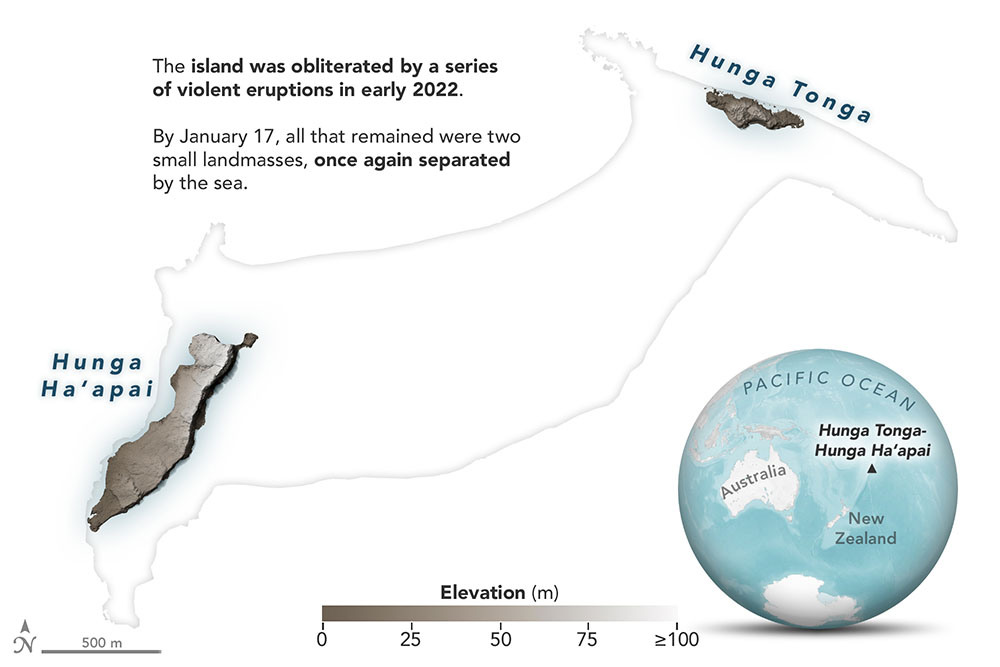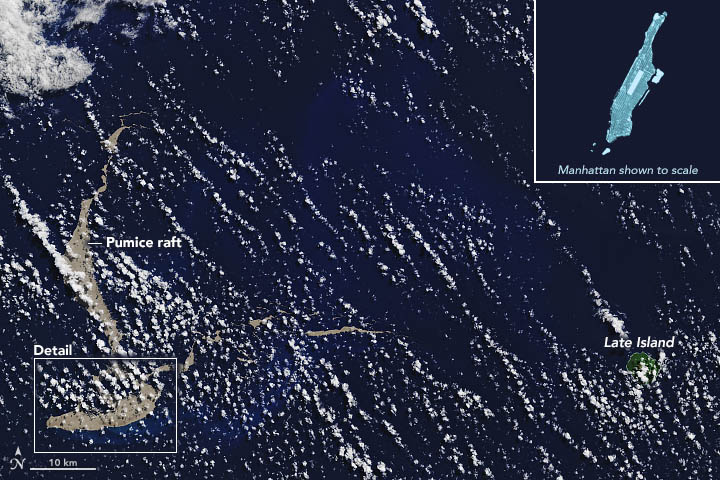On January 15, 2022, in the South Pacific Kingdom of Tonga, the Hunga Tonga–Hunga Haʻapai submarine volcano violently exploded, sending ash 58 kilometers (36 miles) high into the mesosphere and triggering a tsunami with waves towering 15 m (49 ft) in height, striking the west coast of Tongatapu, the main island, as well as other nearby smaller islands. While the Tongan volcano had been active but dormant for about a month, there was no warning of an imminent eruption. See also: Mesosphere; Pacific islands; Pacific Ocean; Tsunami; Volcano

More than 70 percent of all volcanoes on Earth occur below the ocean surface. Most often, these submarine volcanoes erupt in the deep ocean without notice. Less often, near-surface volcanic eruptions affect the safety of people living nearby, as well as ships and aircraft operations. The southwest Pacific Ocean is volcanically and tectonically active, with seismographs recording hundreds of earthquakes per month in the region. Even though the Global Seismic Network covers much of the Pacific Ocean, it is not always possible to verify the precise location of a submarine volcano through seismology. Rafts of floating pumice have been spotted in satellite imagery and then traced back to undetected submarine volcanoes. Although helpful in terms of locating a submarine volcano, pumice rafts do not serve as an early warning signal. See also: Pumice; Remote sensing; Seismographic instrumentation; Seismology; Volcanology

Although seismology and the detection of pumice rafts may not provide adequate early warning signals for submarine volcanism, remote sensing of color changes in the ocean may. Plumes of discolored water from submarine volcanos have been reported by fishing-boat operators and scientists viewing satellite imagery. Japanese scientists have determined that the color of the plume water depends on the mineral composition of volcanic emissions. For example, submarine eruptions near the island of Nishinoshima, Japan, turned the ocean from blue to yellow, brown, or green, as seen in satellite images, depending on the ratio of silicon to iron and aluminum. Furthermore, the ocean started changing color about a month before the submarine volcano there erupted. See also: Mineral
Further research will be necessary to confirm these findings throughout the volcanically active ocean, because ocean color changes may vary geographically, depending on eruption mineralogy. If the findings hold up, remotely sensing ocean color from space may provide an early warning signal, allowing people—including those who live on remote islands—to prepare for an eruption.





